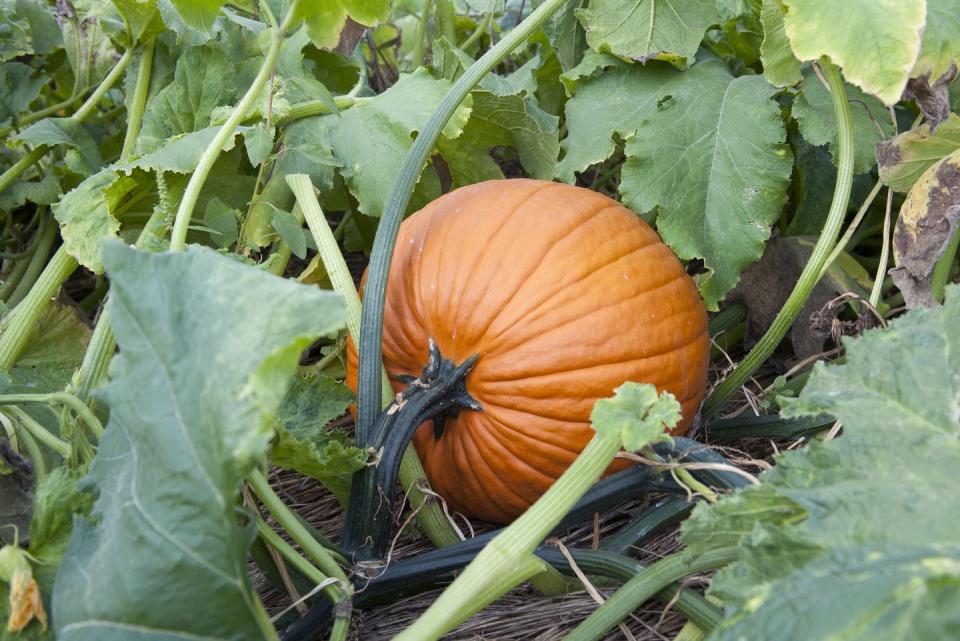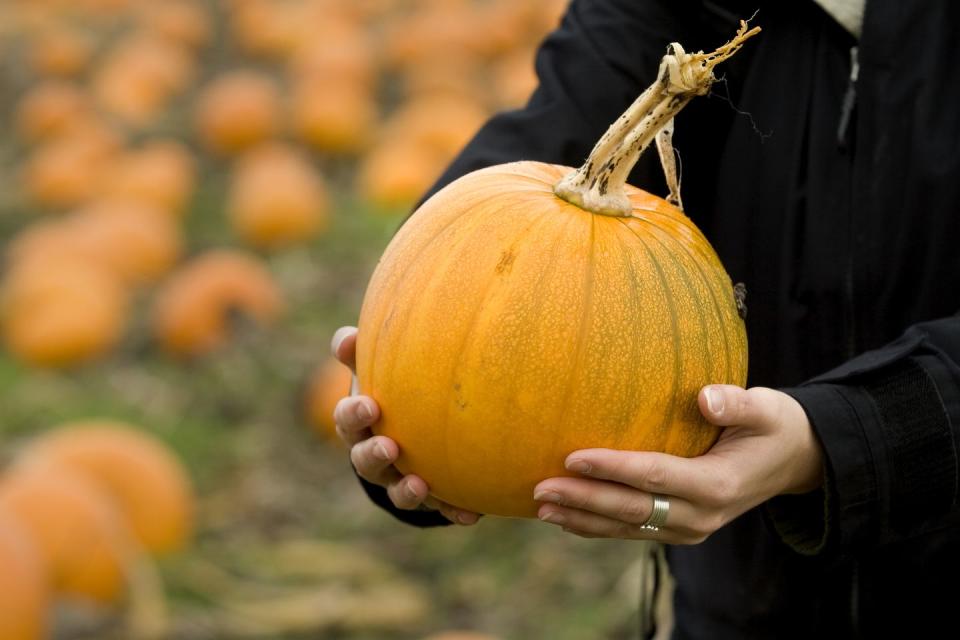Here's Everything You Needed to Know About Growing and Harvesting Pumpkins
It’s no secret that growing pumpkins is sort of a commitment. Not only do they require 90 to 130 days to mature, but they also take up a lot (and we mean a lot!) of room in your garden—with vines ranging from 10 to 25 feet long. Because of the time and effort pumpkins need, you'll want to know when to pick pumpkins so they're perfectly ripe. If you pick them too soon, they won’t last; pick them too late, and they’ll be soft and mushy.
But before you can learn the best time to pick pumpkins, you need to know what types of pumpkins you can grow in your garden.
“It’s really personal preference,” says Luther McLaughlin, general manager of vegetables for PanAmerican Seed. “Everyone has a favorite type.”
With hundreds of varieties, you’ll find pumpkins (which actually are a type of winter squash) of every color, including white, bright orange, blue, and even speckled! Shapes vary from the classic round pumpkin shape to a flatter, more oval profile. Some pumpkins have perfectly smooth skin, while others show off a bumpy, warty hide.
Once you've decided on what you'll be growing, here's everything you need to know about planting pumpkins and figuring out when to pick them.
How much room do pumpkins need to grow?
In order to figure out how much space you'll need for your pumpkins, first read the seed package. This will tell you what type you’re planting and how long the vines will be, says McLaughlin. If you’re tight on space, you can “train” the vines a bit by gently lifting and redirecting them where you want them to go or by coaxing them up a sturdy trellis to save space. But don’t try to plant pumpkins in containers or pots: The vines simply need too much room to spread out.

How much sun do pumpkins need?
Next, you'll need to know how to help your pumpkins thrive. For pumpkins to grow well and ripen, they'll need full sun, which is 6 or more hours of direct sun per day. “More is better,” says McLaughlin. “Ideally, they like 7 or 8 hours of full sun.”
How do I grow pumpkins?
You can grow pumpkins from seeds or transplants. Many people plant on little hills of mounded up earth, but that’s not entirely necessary. Place 2 to 3 seeds per hole, eventually thinning to a single hardy-looking plant per spot. Water well, then again if you haven’t had rain for a week or so.
It’s fine to feed your pumpkin plants, too. Look for a balanced fertilizer (meaning it contains all three components: nitrogen, phosphorus and potassium, which is abbreviated as NPK) that you’d use for other edible garden vegetables, such as cucumbers or squash. The main thing is that you don’t want the nitrogen (the first number) to be too much higher than the other components. If it's too high, you’ll get tons of leafy growth but no fruit, says McLaughlin.
Where should I plant pumpkins?
You'll want to plant flowers nearby to attract pollinators. Pumpkin flowers are pollinated by honey bees, squash bees, and bumble bees in the morning when the flowers are open. Multiple bee visits to a flower are needed in order to transfer enough pollen for fruit set, so make sure you have plants that attract pollinators close by.

When can I pick pumpkins?
Hopefully, you’ve kept the plant tag or seed package to give you an idea of how long they should take to mature. That’s your first tip. Then, watch for the leaves to start dying back and browning. You can pick the pumpkin when it’s nearly or fully colored—whatever hue it’s supposed to be—although some orange types will continue to ripen after harvesting, says McLaughlin. Also, pumpkins don’t do well with cold, so you'll want to harvest them if you’re expecting a heavy frost.
First, make sure you wear garden gloves when picking because the vines are super prickly! You don't want to twist the pumpkin off the vine. Instead, use a sharp knife to cut it from the vine, leaving a stem that’s 4 to 8 inches long (pumpkins with stems that are broken off will rot faster). Carry it by the bottom, not the stem, so it won't break. Then rinse your pumpkin and keep it out of direct sunlight. If you like, a mild bleach wash also may help prolong its lifespan.

